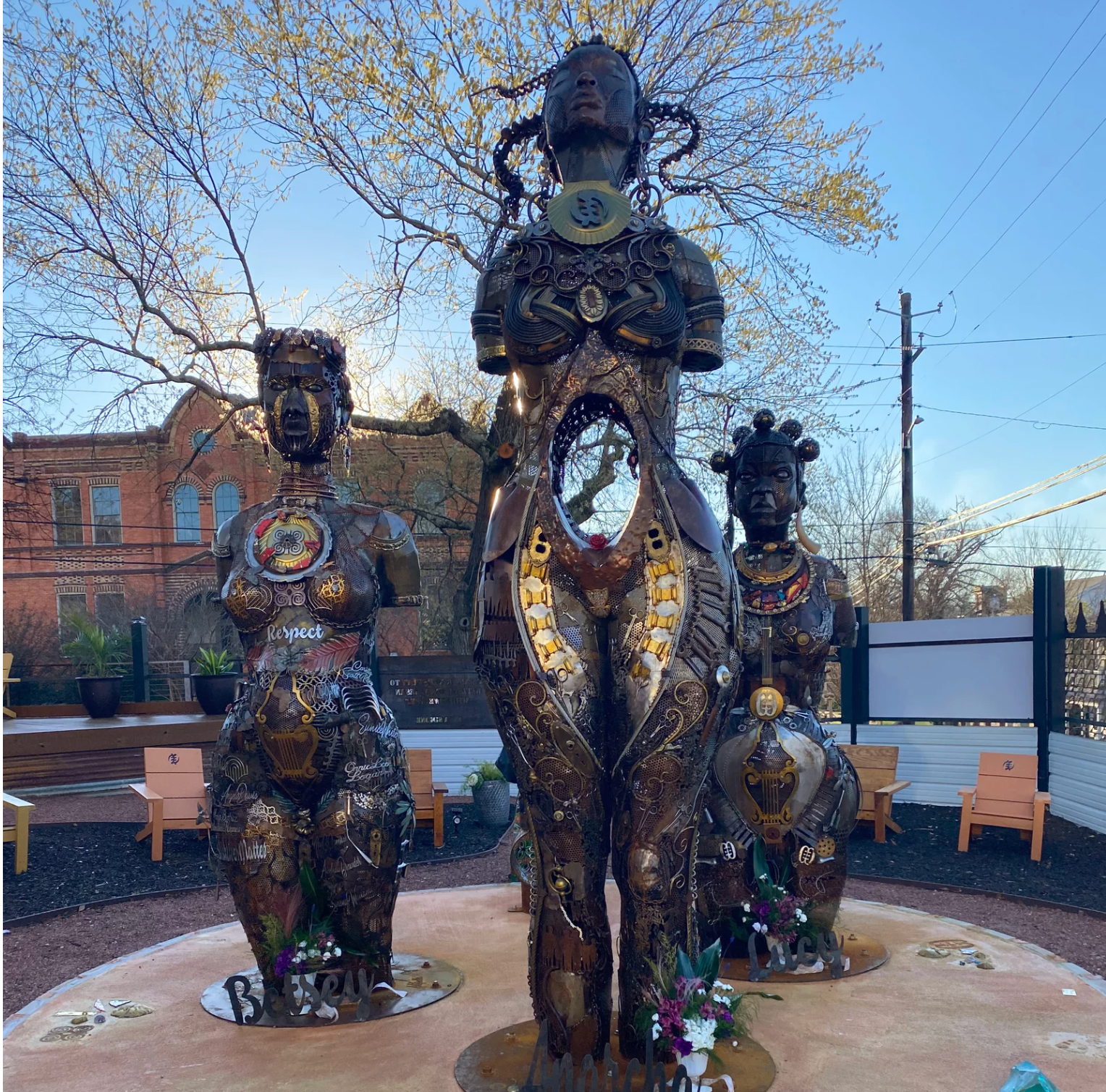Medical experimentation on the bodies of Black women is among the many horrific atrocities of slavery. Enslaved women were forced to participate in painful procedures at the hands of white doctors without anesthesia because they were believed at the time to not experience pain in the same way whites did. But an Alabama artist is paying tribute to those women who were involuntary participants in this research and honoring the sacrifices they made for medicine.
Suggested Reading
Birth professionals from across the country came together at the Old Ship A.M.E Zion Church in Montgomery, AL, in February for a two-day conference on Black maternal health. One of the highlights of the gathering was the unveiling of the Mothers of Gynecology sculptures representing three Black women, known as Anarcha, Lucy, and Betsey.
“The history is told from the point of view of those in power, and those who were in power were men and those who were in power were also white. And we’re talking about women, we’re talking specifically about Black women, and we’re talking about enslaved Black women. So it is important for us to go back and look at this history because the history informs what we’re doing today when we talk about inequalities in health care,” said Dr. Veronica Maria Pimentel, a Hartford, CT-based obstetrician-gynecologist. She started a petition in 2020 to have Anarcha, Lucy and Betsey recognized by the medical community.
Michelle Browder is the local Black artist who turned scrap metal into three eye-catching sculptures. She was a teenager when she first learned about J. Marion Sims, a 19th Century white doctor who is often referred to as the “father of modern gynecology.” Sims is credited with developing gynecological tools and surgical techniques, including the modern-day speculum. But the doctor, who was a slaveholder, performed his experiments on the bodies of enslaved Black women without offering any anesthesia.
Browder’s decision to construct her sculptures on land owned by her family was intentional. Her art is a direct response to a statue of Sims located on the Capitol lawn in Montgomery. The controversial doctor worked in Alabama for 18 years. Browder was able to turn trash into treasure by creating towering images of beautiful African women. Among the intricate details in each sculpture, are words like respect, beauty and resilience. The names of notable African American women, including Ava Duvernay, Angela Davis and Sojourner Truth, can also be seen on the bodies of each figure. But in what is likely the most powerful statement, Browder created a tiara for one of the women out of a speculum, the tool Sims invented. The artist dedicated her work to mothers who have lost children.
“They were birthed out of pain, but also because I wanted to change the narrative,” Browder says. “I wanted to change the conversation about Black women in this country and what we have to contribute and the infant mortality rate, reproductive justice and maternal health. We are in a crisis. And we’re hoping to elevate the conversation.”
“All of my feelings went into that piece. I wanted it to encompass their spiritual pain, the mental pain, their physical pain,” said Deborah Shedrick, who helped build the sculptures.
One of the conference speakers was Charles Johnson. He founded the non-profit organization, 4Kira4Moms, in honor of his wife who passed away from hemorrhage after the birth of their second son. As an advocate for maternal health, he worked with lawmakers on the passage of the Preventing Maternal Deaths Act, which provides funding to conduct investigations of incidents of maternal mortality. In his speech, Johnson reminded attendees of the importance of understanding the history of medical racism against Black people.
“As we work to protect women and babies and put an end to the maternal mortality crisis, it’s also equally as important, if not more, important that we protect our history and that these stories are told,” he said.
Straight From 
Sign up for our free daily newsletter.



